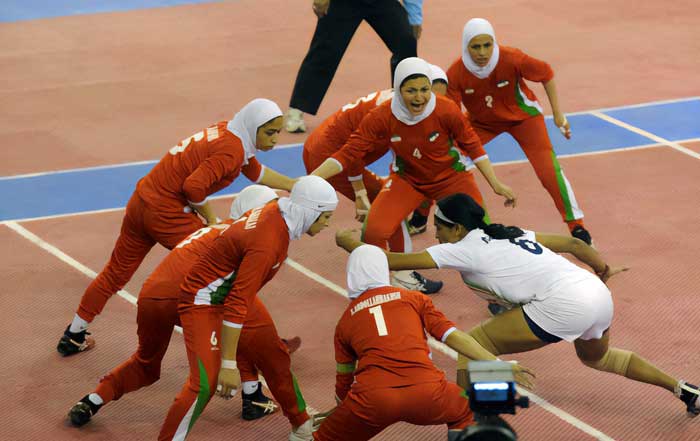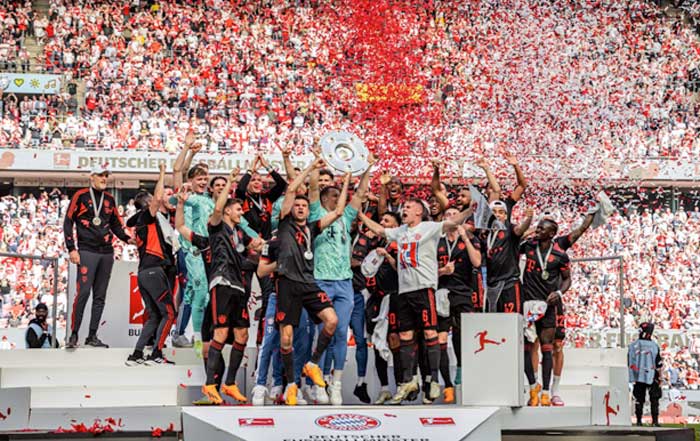Sports have always been a reflection of culture, identity, and social cohesion. While modern athletics, global tournaments, and billion-dollar leagues dominate headlines, traditional sports remain deeply embedded in communities across the globe. They are more than just physical contests; they represent centuries of history, spiritual practices, and collective memory passed down through generations. Nowadays as globalization continues to reshape societies, traditional sports are enjoying a revival, both as symbols of heritage and as vehicles for sustainable tourism, cultural diplomacy, and youth engagement.
For the global audience of Sportsyncr, exploring these time-honored games provides insight into how societies maintain continuity in the face of rapid modernization. By understanding the global mosaic of traditional sports, readers gain appreciation for the diversity of human expression and the unique ways in which competition, honor, and play manifest across cultures.
African Traditional Sports and Their Cultural Impact
Wrestling Traditions in West Africa
In countries such as Senegal, Nigeria, and Niger, traditional wrestling has remained one of the most prominent cultural spectacles. Known locally as Laamb in Senegal, wrestling is not only a sport but also a cultural ceremony infused with music, dance, and spiritual rituals. Athletes, often revered as community heroes, perform pre-match ceremonies with drumming and chants, emphasizing the spiritual bond between athlete and society.
The commercialization of wrestling in recent years has created new opportunities for athletes, with sponsorships and televised events transforming what was once a village pastime into a major national sport. Senegalese wrestling now attracts international audiences, symbolizing Africa’s ability to preserve its traditions while integrating into the modern sports economy. Readers interested in how tradition shapes identity can explore more insights on culture and heritage through the lens of sports.
Stick Fighting and Ritual Combat
In South Africa, the art of Nguni stick fighting has long been a rite of passage for young men, teaching courage, discipline, and self-defense. Similarly, Egypt preserves Tahtib, a stick-fighting tradition that dates back to the time of the Pharaohs. These practices combine martial skill with cultural performance, demonstrating how sports can serve as symbolic education for societal values such as honor and resilience.
These traditional contests have also become attractions in cultural festivals and tourism events, proving that heritage can generate economic value when carefully integrated into local development strategies. This reinforces the connection between business and cultural identity.
Traditional Sports Across Asia
Sumo Wrestling in Japan
Perhaps the most globally recognized traditional sport, Sumo wrestling remains a national treasure in Japan. Beyond its physicality, Sumo embodies Shinto rituals, with wrestlers performing sacred ceremonies before each bout. In 2025, Sumo continues to thrive domestically and internationally, with tournaments drawing attention across Asia, Europe, and North America.
The rise of international wrestlers from countries like Mongolia has expanded the reach of Sumo, transforming it into both a cultural export and a symbol of Japan’s evolving identity. Learn more about Japanese culture in sports and how it continues to influence global athletic practices.
Kabaddi in South Asia
Originating in India, Kabaddi is a fast-paced, tactical sport blending wrestling, rugby-like endurance, and agility. For decades, it was primarily played in rural settings, but in recent years, the Pro Kabaddi League has elevated the sport to professional status, attracting millions of viewers worldwide. Its expansion into countries like Iran, South Korea, and even parts of Europe highlights its potential as a truly global sport.
Kabaddi’s rise is a case study in how traditional sports can evolve into powerful business models when marketed with modern media strategies. Fans can follow the broader implications of traditional sports entering mainstream leagues on sportsyncr’s business coverage.
Martial Arts Traditions
Asia remains the birthplace of countless martial arts, many of which are steeped in centuries-old traditions. From Muay Thai in Thailand to Silat in Indonesia and Malaysia, martial arts serve as cultural expressions and as international sports attracting millions of practitioners. Muay Thai, for instance, is not just a combat sport; it incorporates music, ritual, and respect for teachers, making it a deeply cultural experience.
The integration of martial arts into tourism, fitness, and international competition illustrates their adaptability. Travelers exploring Thailand, Indonesia, or China often seek immersive martial arts experiences, connecting wellness and culture in ways explored further on fitness and health.
Europe’s Living Traditions in Sport
Highland Games in Scotland
The Highland Games are among Europe’s most iconic traditional sporting events. Celebrated annually across Scotland and in Scottish communities abroad, they feature heavy athletics such as caber tossing, hammer throwing, and tug-of-war, combined with music and dance. These games highlight Scotland’s rich cultural heritage while also contributing significantly to tourism.
With international visitors increasingly drawn to heritage festivals, the Highland Games represent how traditional sports foster cultural pride and economic opportunity simultaneously. The events also reflect Europe’s broader interest in connecting sports with tourism, culture, and world affairs.
Pelota and Traditional Ball Games
In Spain and the Basque region, Pelota (also known as Jai Alai) remains a revered sport with fast-paced action and deep cultural resonance. The game has spread to parts of Latin America and the United States, with communities preserving its unique traditions. Similarly, Calcio Storico in Florence, Italy, combines football, rugby, and wrestling in a centuries-old ritual that blurs the line between sport and historical reenactment.
These games are reminders that Europe’s contribution to global sports extends beyond professional football. They embody regional identities and historical continuities that remain alive in the modern era.
The Americas: Tradition Meets Modernity
Lacrosse in North America
Originating among the Indigenous peoples of North America, Lacrosse is both a sport and a spiritual practice. Historically known as “the Creator’s Game,” it served as a way to resolve conflicts, strengthen communities, and honor the divine. Today, it is recognized as the national summer sport of Canada and continues to grow in the United States and internationally.
Professional leagues and collegiate programs have helped elevate lacrosse, yet Indigenous communities continue to emphasize its cultural meaning, ensuring that the sport retains its traditional roots even as it expands globally. Readers can explore broader discussions about sports history and culture in sportsyncr’s news section.
Capoeira in Brazil
Capoeira, a blend of martial art, dance, and music, developed among enslaved Africans in Brazil. Conceived as a form of resistance and cultural survival, it has since become a celebrated national treasure and an internationally recognized art form.
Today, Capoeira schools exist in almost every major city worldwide, symbolizing Brazil’s cultural export power. Its fusion of physical skill, music, and philosophy continues to resonate with younger generations seeking not only fitness but also cultural expression.
Oceania: Island Heritage in Motion
Canoe Racing in Polynesia
Across the Pacific Islands, traditional canoe racing is both a competitive sport and a cultural ceremony. Known as Va’a in Tahiti and Hawaii, outrigger canoeing symbolizes community collaboration, navigation mastery, and respect for the ocean. Events such as the Moloka’i Hoe in Hawaii continue to attract global competitors, ensuring the preservation of Polynesian maritime heritage.
Canoe sports connect history, community, and environmental stewardship, reinforcing the idea that traditional sports also foster ecological awareness. For readers interested in the intersection of athletics and environmental preservation, more can be explored in environment.
🌍 Traditional Sports Around the World
The Relevance of Traditional Sports in 2025
Traditional sports are no longer viewed solely as heritage artifacts; they have evolved into influential tools in modern society. They support identity preservation, stimulate economic development through cultural tourism, and provide pathways for youth empowerment. Organizations such as UNESCO have highlighted traditional sports as intangible cultural heritage worth safeguarding, reinforcing their importance in maintaining global diversity.
Moreover, in a world dominated by digital sports entertainment and esports, traditional sports provide a tactile, communal experience that strengthens social bonds. The blending of technology, such as live streaming and augmented reality, with traditional games ensures their survival and relevance for future generations. Insights into this convergence can be further discovered in sportsyncr’s technology coverage.
A Global Mosaic of Heritage Through Sports
From the wrestling arenas of Senegal to the sumo dohyō of Japan, from Scotland’s Highland Games to Brazil’s Capoeira rodas, traditional sports stand as living testaments to human creativity and resilience. In 2025, their role is not confined to the past; instead, they continue to influence the present and inspire the future.
For the readership of Sportsyncr, understanding these global traditions is not only a cultural journey but also an exploration of how sports shape identity, foster international connections, and provide sustainable opportunities. By preserving and celebrating these ancient practices, societies reaffirm the power of sports to unite humanity across borders and generations.
Middle Eastern Traditions in Sport
Camel Racing in the Gulf States
In the Middle East, camel racing stands as one of the most historically significant traditional sports. Rooted in Bedouin culture, this sport once symbolized community gatherings and celebrations in desert societies. Today, camel racing has evolved into a modern spectacle, particularly in United Arab Emirates, Qatar, and Saudi Arabia, where multi-million-dollar investments have transformed traditional desert tracks into world-class facilities.
The introduction of technology, such as robotic jockeys, has addressed concerns over child jockey exploitation, ensuring ethical practices while preserving cultural integrity. Camel racing also functions as a diplomatic tool, drawing visitors from across the globe and offering an authentic glimpse into Arabian heritage. For readers of Sportsyncr, the evolution of camel racing demonstrates how tradition can adapt responsibly to meet global ethical standards.
Archery and Falconry Traditions
Archery, deeply linked to Islamic history, continues to thrive in Turkey, Iran, and other regions of the Middle East. Once a vital martial skill, it has been reimagined as a competitive sport, celebrated for its combination of physical control and mental focus. Similarly, falconry, recognized by UNESCO as a living heritage, remains popular across the Gulf.
Falconry competitions today combine conservation awareness with cultural celebration, blending traditional values with environmental stewardship. This connection between sports and conservation reflects broader global themes discussed in Sportsyncr’s environment coverage.
South American Heritage Sports
Pato in Argentina
Argentina’s national sport, Pato, combines elements of polo and basketball. Played on horseback, participants aim to throw a ball with handles into vertical nets. Its origins trace back to the 17th century, when gauchos played with a live duck inside a basket, hence the name “Pato.” Over time, humane adaptations shaped the modern version.
While overshadowed internationally by Argentina’s dominance in football, Pato remains a cultural emblem, celebrated in rural communities and at heritage festivals. It demonstrates how traditional equestrian skills evolved into formal sports, preserving national identity while adapting to contemporary ethical standards.
Ulama in Mexico
One of the world’s oldest team sports, Ulama is the direct descendant of the ancient Mesoamerican ball game once played by the Maya and Aztecs. Using rubber balls and hip strikes, Ulama was not just athletic entertainment but also held religious significance, often linked to cosmology and rituals of life and death.
In 2025, Ulama has witnessed a revival, with Mexican communities and cultural organizations preserving the tradition through exhibitions, tournaments, and tourism initiatives. This revival reflects a broader global trend of reclaiming Indigenous heritage, reinforcing sports as cultural memory. Explore more about the deep cultural links of sports in Sportsyncr’s culture section.
North American Heritage Beyond Lacrosse
Snow Snake of the Haudenosaunee
Among Indigenous groups in North America, the Snow Snake game remains an enduring winter tradition. Players slide polished sticks across icy tracks, with distance determining victory. The game reinforces community gathering during harsh winters and highlights craftsmanship, as carving and polishing the snow snakes are integral to the sport.
The Snow Snake tradition, though less globally known, is preserved in cultural gatherings and festivals, showing the resilience of Indigenous cultural practices. It exemplifies the ways sports reinforce identity even in modern multicultural societies.
Rodeo in the United States
Though commercialized today, rodeo has deep roots in North American ranching traditions. Initially practical tests of horsemanship and cattle management, rodeo evolved into public competitions celebrating cowboy culture. Events such as bull riding, barrel racing, and roping remain popular across the U.S., Canada, and Mexico, symbolizing both rugged individualism and community entertainment.
Rodeo also contributes significantly to rural economies, tourism, and cultural branding, showing how traditional sports can scale into national symbols. Readers can find more about the business of heritage sports in Sportsyncr’s business section.
Oceania’s Traditional Competitions
Boomerang and Spear Games of Indigenous Australia
For Indigenous Australians, hunting skills were often transformed into competitive activities, including boomerang throwing and spear competitions. These contests reflected survival practices while fostering skill-sharing among tribes. In contemporary times, such games are celebrated in cultural festivals and heritage programs, connecting younger generations to ancient traditions.
These practices also align with broader themes of sustainability and respect for the land, central to Indigenous worldviews. The recognition of these traditions in sports festivals illustrates the ongoing integration of cultural identity into national consciousness.
Maori Haka and Traditional Games of New Zealand
While the Haka is best known as a war dance performed by New Zealand’s rugby teams, it originates as a Maori ceremonial tradition embodying community strength, identity, and storytelling. Beyond the haka, Maori sports included spear throwing and stick games such as Ti Rakau, which developed agility and rhythm.
The integration of the haka into professional rugby is a striking example of how traditional practices can achieve global visibility while retaining cultural meaning. It demonstrates the power of sports to promote national identity on the world stage.
Technology Meets Tradition
Broadcasting Traditional Sports
In the digital age, traditional sports are no longer confined to local audiences. Live streaming, drone coverage, and virtual reality experiences now bring traditional games to global platforms. For example, camel racing and kabaddi leagues attract international viewers through digital broadcasting partnerships.
This integration of media not only expands viewership but also ensures the economic viability of traditional sports. It highlights the intersection of heritage and modern technology, reinforcing the themes explored in Sportsyncr’s technology coverage.
Esports and Heritage Hybrids
Interestingly, some traditional sports are finding new life in the digital gaming world. Simulations of martial arts, wrestling, and heritage ball games are entering the esports ecosystem. These adaptations provide opportunities for younger audiences to engage with traditions in familiar formats, ensuring cultural relevance in a rapidly digitalized society.
By merging traditional athleticism with digital platforms, communities are finding innovative ways to safeguard heritage while meeting the demands of modern entertainment.
Economic and Social Dimensions of Traditional Sports
Tourism and Heritage Economy
Traditional sports increasingly serve as anchors for cultural tourism. Events such as the Highland Games in Scotland, camel racing in the UAE, and Capoeira festivals in Brazil attract global travelers seeking authentic experiences. These activities contribute to local economies while positioning countries as cultural destinations.
Sports tourism tied to tradition also promotes sustainability by creating income opportunities that encourage preservation of cultural practices rather than their abandonment. Learn more about the growing sports-tourism industry on Sportsyncr’s sports coverage.
Youth Empowerment and Education
Traditional sports also serve as educational tools. In many Indigenous and rural communities, they teach discipline, teamwork, and respect for heritage. Governments and NGOs now integrate traditional sports into school curricula and youth programs, recognizing their role in fostering identity and inclusion.
The revival of these practices highlights the increasing role of sports in social development policies. By linking cultural pride with physical education, societies create pathways for empowerment that resonate across generations.
Toward a Global Future of Traditional Sports
The global landscape of 2025 is characterized by interconnection and cultural blending. Traditional sports stand at the crossroads of heritage and innovation, offering societies a way to preserve history while engaging in modern opportunities. From Indigenous resilience to national branding and digital adaptation, these games prove that traditions are not relics of the past but living forces shaping the present.
For the audience of Sportsyncr, traditional sports represent a field where culture, business, health, and technology converge. They embody the resilience of communities, the adaptability of heritage, and the universal human desire to compete, celebrate, and belong.
Traditional Sports as Cultural Diplomacy
Building Bridges Between Nations
In the modern global landscape, traditional sports have become powerful tools for cultural diplomacy. Events showcasing indigenous games allow countries to present their heritage on an international stage, fostering goodwill and mutual respect. For instance, when Japan hosts Sumo exhibitions abroad or when India promotes Kabaddi leagues internationally, they are not only sharing sports but also cultural narratives that strengthen diplomatic ties.
Organizations such as UNESCO have recognized that safeguarding intangible cultural heritage, including traditional sports, contributes to peace and intercultural dialogue. These efforts remind the world that sports are not solely about competition but also about connection, dialogue, and recognition of diversity. Readers can follow more updates on cultural diplomacy and its intersection with athletics in Sportsyncr’s world coverage.
International Festivals of Heritage Sports
Global festivals dedicated to traditional games are becoming increasingly popular. The World Nomad Games, held in Central Asia, bring together participants from dozens of countries to compete in sports such as horseback wrestling, eagle hunting, and traditional archery. These festivals not only preserve ancient customs but also generate tourism revenue and media attention, demonstrating that tradition has significant international appeal.
By creating global platforms for traditional sports, nations strengthen their soft power while communities benefit from renewed recognition of their cultural identity. This aligns with the broader mission of sports to act as cultural ambassadors across borders.
Health and Fitness Dimensions of Traditional Sports
Physical Benefits Rooted in Heritage
Many traditional sports evolved directly from activities essential for survival—hunting, farming, or combat training. As a result, they inherently foster endurance, strength, agility, and coordination. Wrestling traditions in Africa and Asia, martial arts across the continent, or canoe racing in Polynesia all serve as examples of physically demanding practices that remain highly effective forms of exercise today.
With growing global interest in fitness and wellness, traditional sports are increasingly embraced as alternative training methods. Practicing Capoeira for agility, Muay Thai for endurance, or Highland Games events for strength illustrates how heritage remains relevant to modern health aspirations. For a closer look at sports-based health practices, readers can explore Sportsyncr’s health section.
Mental and Spiritual Wellness
Traditional sports often emphasize holistic well-being. Beyond physical exertion, they integrate rituals, ceremonies, and philosophies that cultivate mindfulness, discipline, and respect. For example, Sumo wrestling incorporates Shinto rituals, while martial arts such as Kung Fu or Silat include spiritual teachings.
In 2025, wellness industries increasingly turn to these traditions as sources of inspiration. Retreats and training centers around the world now offer programs that combine physical training with meditation, cultural learning, and community living. This integration of tradition and wellness aligns with the interests of global professionals seeking balance in both fitness and mental health. See more perspectives on this convergence in Sportsyncr’s fitness section.
Challenges in Preserving Traditional Sports
Modernization and Commercialization
One of the main challenges traditional sports face is maintaining authenticity while adapting to modern commercial realities. The transformation of Kabaddi into a professional league, or the global media coverage of camel racing, raises questions about how much commercialization can occur before the original spirit is diluted.
While modernization provides financial sustainability, it risks overshadowing cultural meanings. Balancing heritage with entertainment value requires thoughtful regulation and community participation. Governments and sporting bodies are increasingly adopting policies to safeguard authenticity while embracing growth.
Decline of Community Participation
In some regions, traditional sports face decline as urbanization, technology, and globalized sports like football and basketball dominate youth interest. Without active preservation, many indigenous games risk fading into obscurity.
Educational initiatives, cultural festivals, and grassroots organizations play a vital role in ensuring younger generations remain connected to these traditions. Countries like Mexico, Japan, and South Africa are leading examples of how governments and local organizations can revive traditional sports through school programs and heritage events. Readers can keep track of these preservation efforts through Sportsyncr’s news section.
Environmental Connections of Traditional Sports
Sustainability and Respect for Nature
Many traditional sports are inherently linked to the environment. Canoe racing in the Pacific Islands depends on ocean stewardship, while falconry emphasizes the symbiotic relationship between humans and animals. Indigenous sports such as boomerang throwing or spear games in Australia highlight harmony with natural ecosystems.
These traditions reinforce sustainable values, offering lessons that modern society can integrate into contemporary environmental strategies. Traditional sports remind us that respect for nature is not a new concept but an ancient practice carried through generations. For broader discussions on environmental connections in sports, see Sportsyncr’s environment section.
Eco-Tourism and Cultural Heritage
Eco-tourism has grown into a multi-billion-dollar industry, and traditional sports play a role in attracting environmentally conscious travelers. Participating in or observing heritage sports such as canoe festivals, Highland Games, or Capoeira workshops allows tourists to engage authentically while supporting local sustainability initiatives.
This intersection of sports, tourism, and sustainability demonstrates the versatility of traditional practices. They not only preserve identity but also provide modern societies with tools for sustainable development.
The Role of Brands and Sponsorships
Commercial Support for Heritage
Brands and corporations are increasingly aligning themselves with traditional sports as part of their corporate responsibility and cultural branding strategies. Sponsorship of events like the Highland Games, Capoeira festivals, or Kabaddi leagues reflects a recognition that heritage has significant audience appeal.
This connection between brands and heritage sports also offers local communities financial support, ensuring that these traditions survive in competitive entertainment markets. However, sponsorships must be carefully structured to respect cultural values, avoiding the commodification of sacred practices. For more insights into this balance, explore Sportsyncr’s sponsorship coverage.
Global Recognition Through Branding
International brands also use traditional sports as marketing opportunities. For example, apparel companies highlight martial arts or Capoeira in their campaigns to emphasize authenticity, agility, and cultural depth. These associations reflect the growing importance of cultural narratives in brand positioning.
By connecting traditional sports with global markets, brands help elevate local traditions into the international spotlight while fostering pride in communities of origin.
Future Outlook: Preserving Identity in a Globalized World
The Role of Technology and Innovation
Looking ahead, the future of traditional sports depends on integrating innovation while safeguarding heritage. Artificial intelligence, data analytics, and immersive technologies like augmented reality are being applied to document, teach, and promote traditional games. Online platforms allow global audiences to learn and participate in traditions that once seemed distant.
This technological embrace ensures accessibility, particularly for younger generations who connect through digital media. It transforms tradition from being geographically bound to universally accessible. For further analysis on this transformation, visit Sportsyncr’s technology section.
A Global Network of Heritage Athletes
As interest in traditional sports grows, a new generation of athletes is emerging, blending heritage with professional ambition. Whether through Capoeira instructors traveling the world, Kabaddi players competing in international leagues, or Sumo wrestlers representing foreign nations, these athletes embody a fusion of tradition and global culture.
They are not just sportspeople but cultural ambassadors, ensuring traditions remain vibrant, respected, and globally visible.
Tradition as a Living Force
Traditional sports worldwide embody the essence of culture, resilience, and shared human experience. They are not confined to history books but continue to evolve, shaping societies in 2025 and beyond. From camel racing in the Middle East to Lacrosse in North America, from the Highland Games in Europe to canoe racing in Polynesia, these practices are living legacies that continue to unite people through competition, storytelling, and identity.
For the global readership of Sportsyncr, understanding traditional sports means recognizing their enduring value in shaping culture, business, health, and international relations. In a rapidly globalizing world, they remind us that preserving heritage is not about resisting change, but about carrying forward identity into the future.







